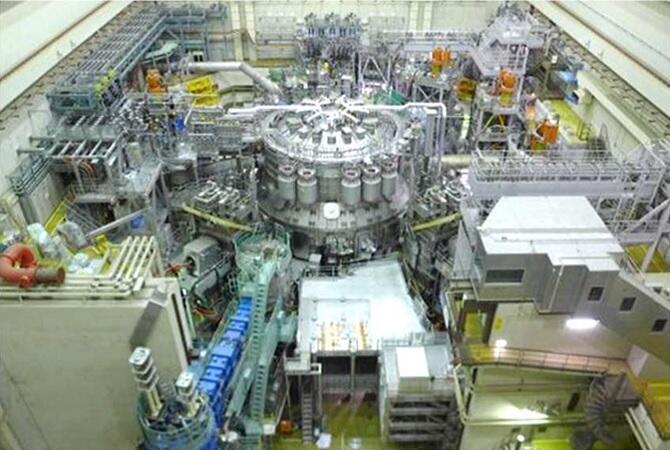The National Institutes for Quantum Science and Technology (QST) and NTT announced that they have established an AI prediction method applicable to plasma confinement magnetic fields in large fusion devices and gained prospects for implementation in the JT-60SA, a large tokamak-type superconducting plasma experimental device.
The two organizations established a technology to predict plasma with high accuracy using a method called Mixture of Experts (MoE), which integrates optimal AI models with appropriate weighting according to sequentially changing situations. The organizations applied this technology to JT-60SA to evaluate actual plasma confinement magnetic fields. As a result, they succeeded, for the first time in the world, in reproducing the position and shape of plasma, which depend on the magnetic field structure, by using AI without performing complex calculations, with the accuracy required for actual plasma control (approximately 1 centimeter: about 1% of the world's largest plasma, the world's highest precision). In particular, under conditions where the current flowing in the plasma is not steady but fluctuating, the accuracy of reconstructing the plasma confinement magnetic field decreases with a single AI model. However, by using MoE, the state recognition and command control AI appropriately weights the state AI model, enabling accurate evaluation of the plasma confinement magnetic field even in transient situations.

Provided by QST
With conventional analytical reconstruction methods based on physical laws, control of the position and shape of the sequentially changing plasma boundary (periphery) region was theoretically possible. However, the newly developed method provides prospects for real-time control of multiple control variables, including the distribution of current and pressure inside the plasma, which is important for avoiding plasma instability and was impossible with conventional methods. This achievement has resulted in a technology that will be effective in challenging real-time control of high-temperature plasma in future heating experiments at JT-60SA. This technology is attracting attention as groundbreaking technology that will lead to plasma prediction and control for fusion reactors such as ITER and prototype reactors, which control larger plasmas with fewer measuring instruments.
QST and NTT signed a collaborative cooperation agreement in 2020 and have been conducting joint research aimed at creating innovative environmental energy technologies ahead of the world. Following these results, both organizations have agreed to further extend their collaborative cooperation agreement. In the future, they will continue to work together toward the early practical application of fusion energy while applying advanced technologies, including NTT's IOWN concept, to fusion research and development.
This article has been translated by JST with permission from The Science News Ltd. (https://sci-news.co.jp/). Unauthorized reproduction of the article and photographs is prohibited.




